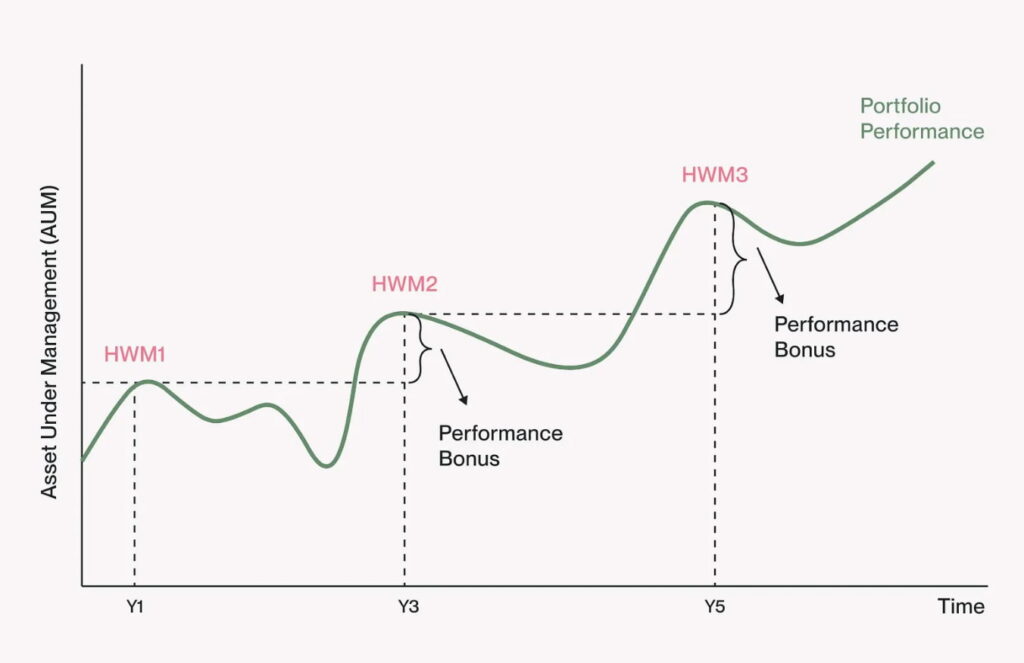Disclaimer
Summary: Hedonova is an alternative investment platform catering to investors interested in assets such as real estate, art, music royalties, equipment finance, and several others. In this guide, we’re exploring the fees associated with the platform and saying a few words about tax implications associated with alternative investments.
What is Hedonova?
Hedonova is an alternative investment platform focused on managing a hedge fund comprising assets other than traditional stocks and bonds, including real estate, art, music royalties, etc. The chief appeal of the platform lies in the investment automation and streamlining that it offers. That is, by making an initial deposit, investors can let the Hedonova team manage and oversee the hedge fund, ensuring a hands-off investment experience and steady passive income.
Hedonova is available to both US and international clients, and at the time of writing (January 2024), its portfolio structure is as follows:
- 20% Equipment Finance;
- 19% Litigation Finance;
- 13% Real Estate;
- 12% Startups;
- 11% Carbon Credit;
- 8% Cash;
- 7% Music Royalty;
- 6% Agronomy;
- 4% Art.
Hedonova fees
Being a bit riskier than their traditional counterparts, alternative assets require careful consideration of associated fees. In this section, we shed some light on Hedonova’s fee structures to offer you a more comprehensive overview of the platform.
To initiate your investment journey, an initial deposit of $10,000 is required. Of course, investors can choose to transfer more substantial sums, as the platform imposes no investment cap.
While the minimum threshold appears high — in the past, Hedonova had a minimum investment set at $5,000 — the investors are assured that it is worth it, considering the advantages the platform offers. Those include high yields, expert leadership, responsive customer support, and performance fees based on the high-water mark principle.
For example, if you invest the minimum of $10,000, and the value of your portfolio rises to $15,000 in the first year and then falls to $12,000 in the second, the high-water mark will be $15,000, and performance fees are then calculated based on that number. In the first year, since the value of the fund has increased, you may be charged a performance fee on the positive returns generated. In the second year, since the value of the fund has decreased below the high-water mark, there would be no performance fee charged in this year. You would only pay the management fee or any other applicable fees.

Fees
There are two types of fees at Hedonova:
- Management Fee: A 1% annual management fee is charged on the invested capital and deducted from the assets.
- Performance Fee: Hedonova imposes a 10% performance fee on your overall profits, encompassing both capital gains and dividends. This fee is calculated every year based on the high-water mark principle described above.
There are no withdrawal fees. Investors can withdraw their funds at any time and receive them within a three-month period.
Suppose an investor initially invests $20,000. The management fee would be 1% of $20,000, which equals $200. Let’s assume the investor makes a gross profit of $2,000. The performance fee would be 10% of $2,000, equating to $200. So, with a gross profit of $2,000, after accounting for both the management fee and the performance fee, the investor would be left with a net return of $1,600.
Tax implications
Tax implications of fees vary based on each investor’s jurisdiction.
Hedonova is designed as a financial entity that makes tax matters simpler for its investors. In technical terms, it’s what’s known as a ‘pass-through’ entity for tax purposes. This means that the income Hedonova earns doesn’t get taxed right away at the company level. Instead, this income is passed on to the investors themselves. Each investor then includes their share of Hedonova’s income or losses when they file their own tax returns. This way of handling taxes is particularly beneficial for investors in the U.S., as it simplifies tax processes and can lead to better tax efficiency.
For investors outside the U.S., Hedonova’s status as a ‘pass-through’ entity means they’ll need to declare any income or losses from their Hedonova investments on their personal tax returns in their own countries. Exactly how this affects their taxes will depend on the specific tax rules and regulations of each investor’s home country.
Conclusion
Hedonova operates a robust and well-crafted hedge fund accessible to individual and institutional investors worldwide. The most important thing to note when assessing its fee structure is the minimum initial deposit of $10,000. The number certainly does appear steep, but bear in mind that some funds come with six- or seven-digit minimum investments.
As for the main fee structure, investors can expect a 1% management and 10% performance fees calculated based on the high-water mark principle. That means users don’t have to pay high fees for underperforming investments.
Disclaimer: The content on this site should not be considered investment advice. Investing is speculative. When investing, your capital is at risk.
FAQs about Hedonova fees
What is the minimum investment at Hedonova?
To start investing at Hedonova, you will need to make an initial deposit of $10,000.
Is there a minimum for subsequent investments at Hedonova?
No, you have the flexibility to invest any amount you choose after your initial investment, without any set lower limit.
Are there maximum investments at Hedonova?
There are no upper limits on the amount you can invest.
What are the fees like at Hedonova?
Hedonova charges a performance fee of 10% on any profits made. This fee is applied once a year or when you withdraw your investment, whichever comes first. There’s also a management fee, which is 1% of the amount you’ve invested. This fee is charged annually, starting one year after your initial investment, or it’s applied when you withdraw your investment, again depending on which happens earlier.
How do I fund my Hedonova account?
To add funds to your Hedonova account, it’s quite simple and flexible. You have the option to use payment gateways for transferring money, or you can opt for wire transfers. This means you can choose the most convenient way for you to deposit funds into your account, whether it’s through commonly used payment channels or the more traditional method of a wire transfer.
What are Hedonova’s dividend policies?
All dividends at Hedonova are reinvested in the fund. By automatically reinvesting all dividends back into the fund, your investment has the potential to compound and grow more significantly over time.




